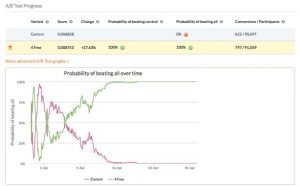
Free-Photos / Pixabay
Normally when you choose to switch to a fully remote workforce it’s a well thought out and planned decision.
But over the past few weeks offices, schools, and entire companies have been forced to close at short notice.
Managing the transition from any in person to online activity can be incredibly tricky. There’s a lot of changes to communicate clearly. The lack of face to face conversations can lead to the loss of nuance in conversations. Remote team communication looks very different to in office communication.
It does seem doom and gloom at the moment. Schools are going fully digital, non-profits have to find new ways to operate online, and HR managers are learning how to hire and onboard remote team members. But this new frontier of remote work can be an opportunity.
A major switch in your office environment can be the chance to reaffirm a company culture. The opportunity to go above and beyond, such as mailing employees hampers or providing flexible hours, can be a great way to build a good company reputation.
But the most important thing you can do during this time is to ensure that you manage the transition well. A well managed transition will help your staff feel safe, and will help ensure that your company suffers the least disruption possible.
1. Make sure you over-communicate with staff during the early days
Anything new has the potential to be unsettling. Anything unfamiliar can seem daunting. At the start of your companies transition to remote work try to over-communicate with staff. Have your CEO or a high level manager send entire company comms once a day throughout the first week. Ask managers to check in with their direct reports; not just work wise but to see how they are doing personally.
2. Avoid long text documents, use visuals instead
It’s easy to skim a long document, especially if it’s mostly text. But the important documents you’re sending out during your transition to remote work need to be read and understood, in full. Avoid long text documents and instead try and break up information with visuals. Visualize your ideas in an infographic, or use charts to show data. Even change the fonts and colors of key information to make sure it stands out.
3. Set clear deadlines and expectations
One thing that is essential to manage the stress of a remote working transition is to set very clear deadlines and expectations for your teams. Make sure that everybody understands what is expected of them during this time. If a project or task is complicated create a checklist to follow. Working from home can take a while to adapt to, with the set office routines no longer in place. By being very clear about what is needed and when you can help your remote teams focused.
4. Take and give feedback regularly
Alongside setting clear expectations and communicating with your staff, make sure to offer feedback on a regular basis. Feedback can be both positive and negative – don’t be afraid to highlight good work. As well as giving feedback, make sure to create an environment where the entire team feels comfortable providing feedback. This is a new adjustment for them, as well as you, and feedback should be a two sided conversation.
Business & Finance Articles on Business 2 Community
(22)









